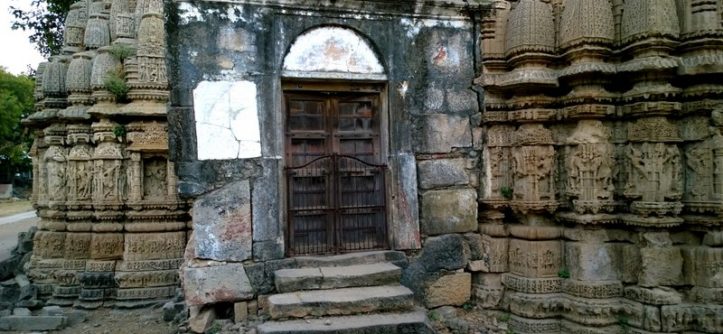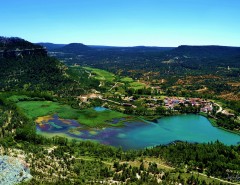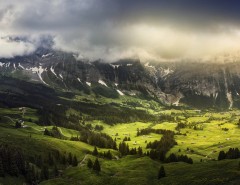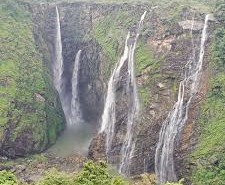The Rudra Mahalaya Temple, also known as Rudramal, is a ruined temple complex at Siddhpur in the Patan district of Gujarat, India. Its construction was started in 943 AD by Mularaja and completed in 1140 AD by Siddharaj Jaisinh, the rulers of the Solanki dynasty. The temple was destroyed by Allauddin Khilji, and later Ahmed Shah I (1410–44) desecrated and substantially demolished this temple, and also converted part of it into the congregational mosque (Jami Masjid) of the city. Two torans (porches) and four pillars of the former central structure still stand along with western part of the complex used as a congregational mosque.
Siddhpur, historically known as Sristhal. Sidhpur, under the rulers of Solanki dynasty, was a prominent town in the 10th century. In the tenth century (943 AD) Mularaja, the founder of the Solanki dynasty of Gujarat, started the erection of the Rudra Mahalay temple. In his youth, Muladev had slain his maternal uncle, usurped his throne, and murdered the whole of his mother’s kindred; and in old age his crimes hung heavily on his mind. He made pilgrimages and courted the favour of Brahmins from far and near. To a band of them he gave Sristhal, and committing the kingdom to his son Chamundaraja, he retired there to end his days in their company (996 AD). But the Rudra Mahalay was still incomplete, nor was it finished till 1140 AD.
On Monday the fourteenth, in the Nakshatra Shravan and Varyan Yoga,
Siddharaj, in the Rudra Mala, Shivashankar established.
It was during the 12th century, in 1140 AD, that Siddharaj Jaisinh (1094–1144) consecrated the temple complex and it became the principal temple complex of Siddhpur.
According to another legend, two Parmars from Malwa, named Govinddas and Madhavdas, took up their haunt among the rush grass that covered the neighbourhood of the Rudra Mahalaya, and lived by plunder. There they found the foundations of a temple and Shiva linga, and said that in the night they had seen heavenly beings. This was told to Siddharaj and led to the erection or completion of the temple.
In Mirat-i-Ahmadi, Ali Muhammad Khan writes, The king on signifying his intention of building the temple, requested the astrologers, it is said, to appoint a fortunate hour; and they at this time predicted the destruction of the building. Then Siddha Raja caused images of “horse lords” and other great kings to be placed in the temple, and “near them a representation of himself in the attitude of supplication, with an inscription praying that, even if the land was laid waste, this temple might not be destroyed.
Alauddin Khilji sent an army under Ulugh Khan and Nusrat Khan Jalesri who dismantled the temple complex in 1296 AD (Samvat 1353).[1] The temple was further destroyed and the western part of it was converted into congregational mosque (Jami Mosque) by Ahmed Shah I (1410–44) of Muzaffarid dynasty in 1414 or 1415.
The original temple, completed in 1140 to lavish proportions with extensive ornamentation, consisted of a roof measuring 32 feet (9.8 m), much larger than the Abu temple. Its overall dimensions were 300 by 230 feet (91 m × 70 m) with the central building 150 feet (46 m) in length. It was a triple storied temple with 1,600 pillars, 12 entrance doors, and 11 shrines of Rudra positioned around it. The sanctum was located on the west and there was also a ‘mandapa’ or hall which had porches on the eastern, northern, and southern wings.
Today only a few remnants of this complex are seen, such as two “torans” (porches) and four pillars. One “toran” is elaborately ornamented; the eastern gate which leads to the Saraswati river still stands; the remaining pillars have highly ornamented carvings. Kirti Stambh of North has survived. The western part of complex converted into the congregation mosque is also there.
- Country – India
- State – Gujarat
- District – Patan




